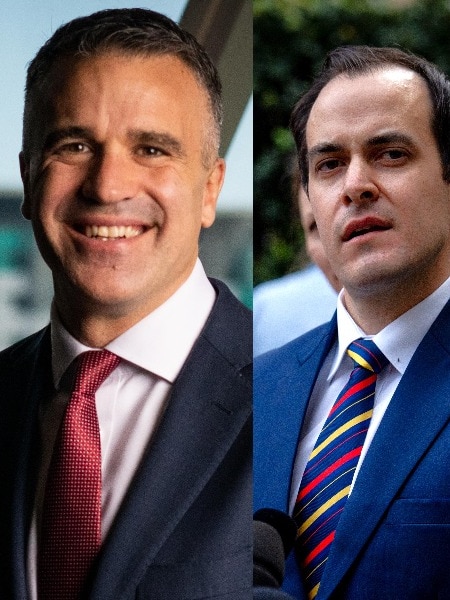Who doesn’t love a birthday present or two?
As South Australian Premier Peter Malinauskas marked another lap around the sun in recent days, his opponents delivered him a political gift.
Wrapped in blue with a bow, it came in the form of a messy Liberal leadership spill barely 18 months out from the next election.
There were David Speirs’s “gutful” moment as he quit, his threat of (then apparent retreat from) shifting to the crossbench, and a contested leadership ballot some Liberals wanted to avoid.
Throughout all of that, there were rumours of factional deals, denials from new leader Vincent Tarzia he was one of the people who had undermined his predecessor, and what could be viewed as a subtle dig by Mr Speirs at his successor on social media before he then headed off to a family wedding in Scotland.
Happy birthday, Mr Premier.
He wasted no time in opening the box and unpacking the present.
During his press conference on Wednesday, Mr Malinauskas mused about the fact that it was deputy opposition leader John Gardner — and not Mr Tarzia — who had gone before the cameras to declare he was “absolutely convinced and certain” that Mr Speirs would remain in the Liberal fold.
“Only the South Australian Liberals could come up with a plan to have the deputy leader put the current leader in hiding to find a way to explain what the former leader will be doing about their own status in the Liberal Party,” he said.
“That strikes me as unique to the South Australian Liberal Party.”
Rightly or wrongly, the Liberals’ last fortnight plays into a well-worn stereotype of the party in SA.
Namely, it’s too frequently focused on itself — on its disunity, disorganisation, and factional mud fights — rather than delivering a credible alternative vision for the state while holding Labor to account.
Tropes of SA Liberal party room stoushes of yore can quickly resurface at the slightest sniff of dysfunction.
Despite the leadership swap, Mr Tarzia is only the third SA Liberal leader in more than 11 years, which could be regarded as an indicator of better discipline and unity at a state level than has been historically apparent.
Labor has had two leaders over the same time frame, with the orderly transition from Jay Weatherill to Peter Malinauskas following the 2018 election defeat.
Mr Tarzia tried to set the tone for his tenure at the top in his opening media interviews, saying he wanted a “respectful reset” with some interest groups, and stating the party “will win the state election in 2026”.
Considering the Liberals have sat on government benches just once after a state election this century, it’s a courageous call — and one which arguably became more courageous following the release of the draft electoral boundaries for the next election.
Redrawing battlelines
The boundaries report might be niche reading for political insiders, but it’s important.
It establishes the political battlefield for the contest ahead, and the final decision by the Electoral Districts Boundaries Commission doesn’t often vary too greatly from the draft.
Unlike the wholesale changes unveiled ahead of the 2018 election, where nearly 400,000 electors were shunted between seats, this proposed redistribution sees just under 45,000 people moved and 26 electorates left unchanged altogether.
The draft redraw leaves Labor with just three seats on a margin of less than 5 per cent, while Dunstan – which they picked up at the by-election in March – is notionally Liberal.
But on the other side of the ledger, there are 10 notionally Liberal seats on margins of less than 5 per cent, which includes three they don’t currently hold – Stuart, Kavel and the aforementioned Dunstan.
Plus, there are the safer seats of Narungga, Mount Gambier and MacKillop which are in the hands of independents who were all Liberals at some stage.
Then there’s Black, David Speirs’s southern suburbs electorate, which has had its margin shaved by more than half to just 1 per cent.
All in all, advantage Labor – for now – headed towards 2026.
Or as ABC election analyst Antony Green wrote on Thursday, “the Liberal Party and its new leader Vincent Tarzia have a mountain to climb to win the next election”.
Some in the state government have pointed out there is a path for the Liberals to take office in 2026. It’s narrow, but it’s there.
Any chance of success, however, will also depend on the Liberals minimising how many gifts they hand the premier and Labor in the coming 18 months.




